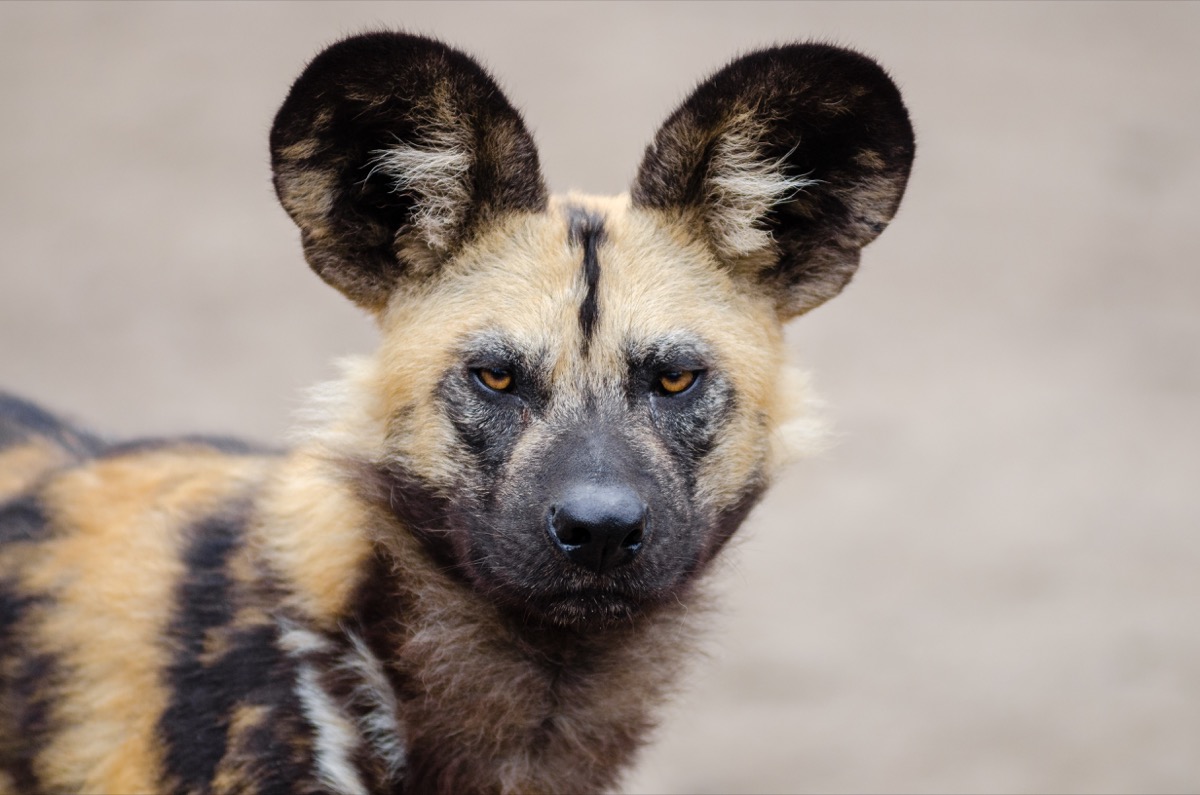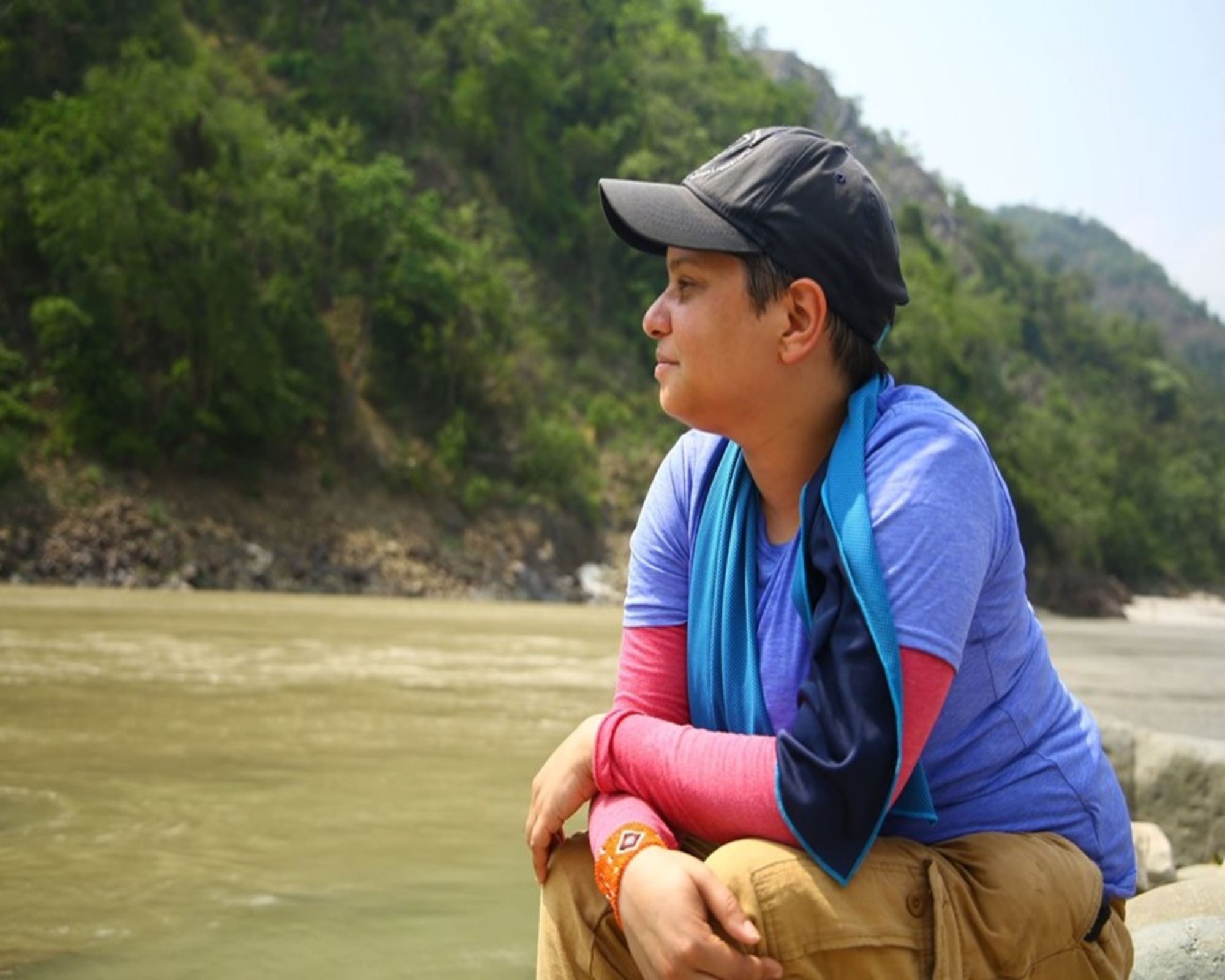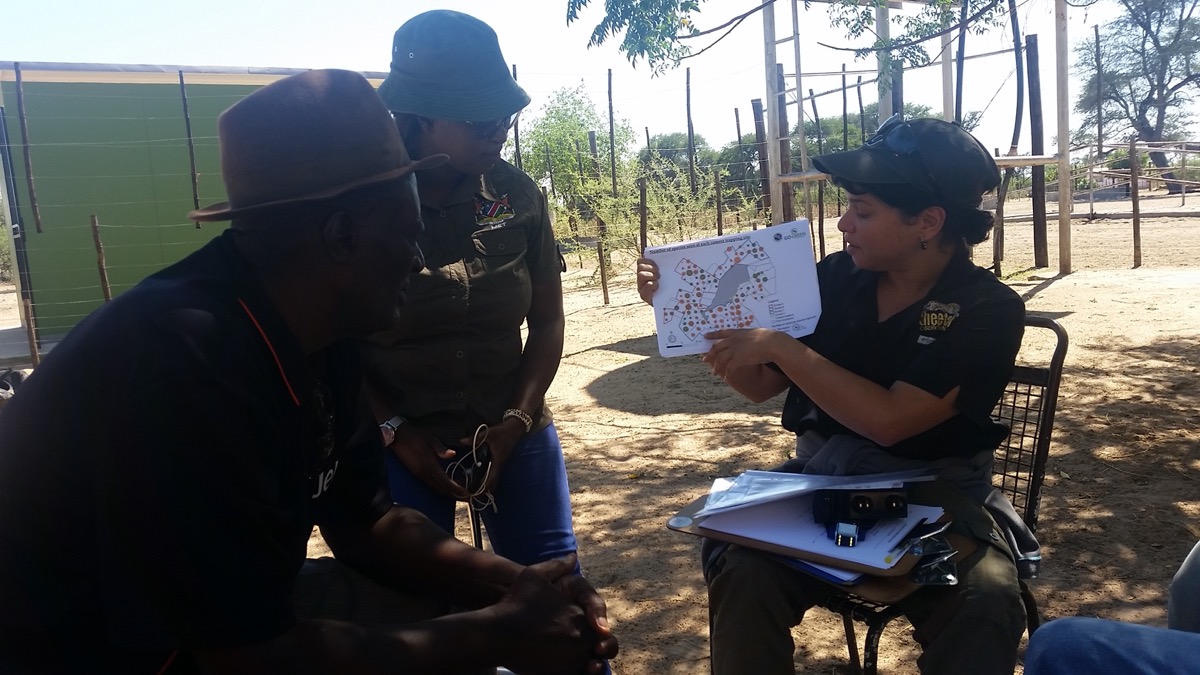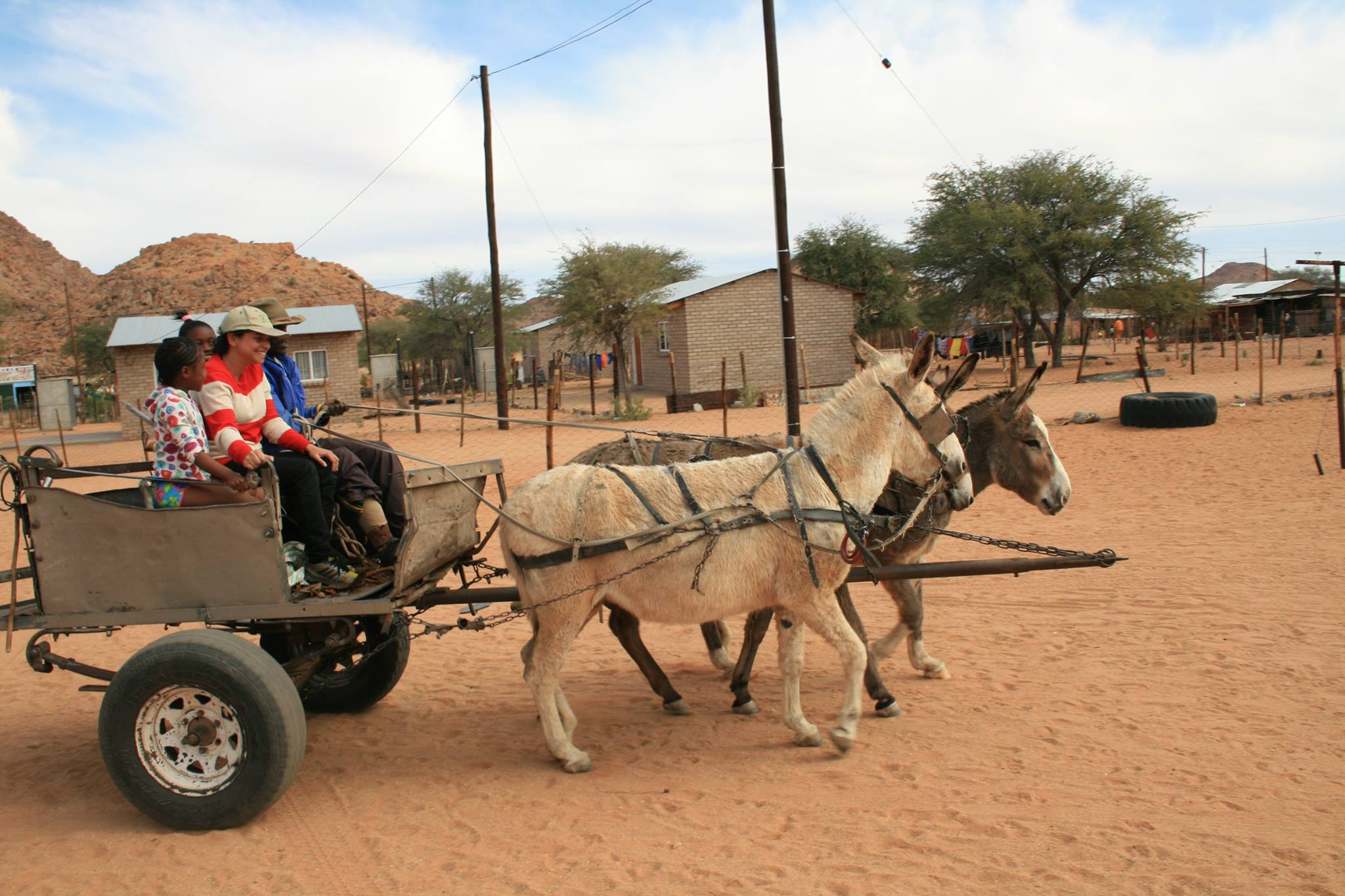Sniffing Out How To Save African Wild Dogs
12:03 minutes

One of the most endangered mammals on Earth, African wild dogs are known for their oversized ears, social bonds, and highly efficient hunting style. That predatory nature is now contributing to their threatened status, as their territory in sub-Saharan Africa increasingly overlaps with human farmers, who often use poison or other lethal deterrents to protect their livestock from wild dogs and other predators.

Producer Christie Taylor talks to carnivore biologist Gabi Fleury about their research on African wild dogs and other threatened wildlife, and how thoughtful applications of technology could help solve conflicts between farmers and hungry predators—hopefully saving dogs’ lives.
Plus, they talk about what it’s like to make it into conservation biology, after a lifetime of dreaming about it.


Gabi Fleury is a conservation biologist for The Rainforest Trust and a Fulbright Scholar in Washington, D.C. They were also listed on Forbes 30 Under 30 in 2021.
IRA FLATOW: This is Science Friday. I’m Ira Flatow. One of the most endangered mammals on the planet is the African wild dog. There are only perhaps 6,000 left in all of sub-Saharan Africa. And as their habitat gets broken up by more human settlements, they’re learning that an easy source of food is, well, farm animals like goats and cattle. Which it turns out results in a not-so-great outcome for the wild dogs.
Christie Taylor interviewed a researcher working on exactly this problem. Hey there, Christie.
CHRISTIE TAYLOR: Hey there, Ira.
IRA FLATOW: You know, if I were an endangered animal trying to get by, it seems like getting a farmer’s goat would be like a brilliant idea. I mean, it’s a good source of food.
CHRISTIE TAYLOR: You would think so, Ira. Unfortunately, it turns out that when you are a farmer and you have a predator eating the source of your livelihood, it’s actually a very natural response to try to kill that predator. And farmers, who often use poison, are actually a really big problem for African wild dogs, and even other carnivores like lions and jackals.
So a lot of researchers are actually working on ways to keep these carnivores away from livestock in order to keep them all alive.
IRA FLATOW: Yeah, I see what you’re talking about. So tell us a little bit about your story.
CHRISTIE TAYLOR: Sure. I talked to Gabi Fleury who is an early career scientist who is up to all kinds of cool stuff. They’ve done research in Namibia, South Africa, and Kenya and they are a Fulbright scholar with an upcoming research project in Botswana.
IRA FLATOW: Wow. Sounds like a lot of frequent flyer miles.
CHRISTIE TAYLOR: Yeah, I’m not going to lie, Gabi’s work sounds amazingly cool to me. And it’s all in the name of finding technology tricks to keep livestock safe from African wild dogs and other big endangered carnivores. Which, as I mentioned, we’ll keep those carnivores themselves alive and thriving.
And I started by asking Gabi how they first got interested in carnivore conservation.
GABI FLEURY: Yeah, so I’ve always known I wanted to become a conservation biologist. I knew from the age of three. I’m not sure if I watched too much Captain Planet or too much Lion King. Probably one of the two. But it’s something I’ve always wanted to do.
And it wasn’t until college that I realized that a lot of the species that I was most passionate about, such as big carnivores species that have such a big impact on the environment, we’re actually really heavily impacted by something called human wildlife conflict. There’s positive interactions and there’s negative interactions. And human wildlife conflict often falls on the negative side.
And essentially what I focus on is something called predator and livestock conflict. A lot of what that means is, due to many different reasons, carnivores will sometimes take farmers’ livestock and that will cause conflict with the farmers that often go after carnivores or kill carnivores. So it’s not great for farmers and it’s not great for conservation.
So it’s trying to essentially be a bit of a diplomat and try to figure out ways to reduce livestock loss. But also work very closely with farmers trying to figure out ways to not only help them retain their livelihoods but also work on building tolerance and trying to figure out kind of what some of the drivers of that conflict is on both sides.
CHRISTIE TAYLOR: So next year, you’ll be embarking on a Fulbright scholarship project in Botswana to study African wild dogs. What’s the story with that?
GABI FLEURY: Yeah. So African wild dogs are an amazing species. And they’re one of the most endangered carnivores in Africa. Only the Ethiopian wolf is more endangered. There’s only about 6,600 African wild dogs left in the world. And Botswana has one third of the remaining population of African wild dogs.
CHRISTIE TAYLOR: Wow.
GABI FLEURY: So there’s a huge conservation need. And there’s many other reasons why I love them. And why I find them really fascinating is that they’re very social. They have a really unique and complex social structure. They’re very intelligent. And also because their ranges are so big, they often are really complex to try to conserve because their ranges can cross countries. So a lot of the time it’s transboundary conservation as well.
When I was working for the Cheetah Conservation Fund in Namibia, we actually had some African wild dog puppies that were rescued due to a conflict event. So farmers had shot their entire pack and we brought the puppies back to rehabilitate them.
What I realized, working with these farmers in Namibia is that African wild dogs actually overall took less livestock than jackals, for instance. But farmers had an outsized dislike of African wild dogs. And I found that really interesting that the perception of how much of a problem they actually were was different than the actual recording of events. So they thought that they were more of an issue than they actually were.
CHRISTIE TAYLOR: So this is actually like where some of the threat to an endangered species like African wild dogs comes from is farmers killing them. So what is the normal relationship between farmers and carnivores?
GABI FLEURY: When I was working in Kenya, I worked with an organization called Big Life Foundation. And they work very closely with the Maasai community there. And they had a compensation fund that, usually compensation funds are not particularly effective in conservation, but this one was because it was an idea that was sparked from the community. And they were able to reduce a lot of lion killings by working very closely with the community.
So even though there might still be a bit of conflict because carnivores eat livestock and farmers want to protect their livestock, there’s ways to kind of work around that. As well as, in terms of reducing livestock, a big driver as well is just the fact that carnivores usually would prefer to go after natural prey. But if there’s less natural prey in the area, it’s an easy meal. So they tend to go for livestock when a lot of their prey has been driven out. And that could be due to land cover change, habitat destruction, but also things like bushmeat poaching. So there’s a lot of different factors that could drive that.
CHRISTIE TAYLOR: So I know you’re looking at technology as sort of a source of ways to reduce this conflict. What do we know so far?
GABI FLEURY: Yeah. There’s many different strategies, from very low tech to very high tech. Some of the things I’ve tested in the past have been, there called non-lethal deterrence. So essentially you try to scare away predators from livestock in a way that doesn’t hurt the actual wildlife.
So there’s these systems called Foxlight systems which you can put up on a livestock enclosure that has a flashing light system that looks like somebody is walking around with a flashlight. So if a carnivore sees that from far away, it looks like people are around and they get startled.
And people sometimes even get really creative. There was a recent study out of Australia, where they used the tube men from the used car salesman tube. They’re inflatable and they’re very tall and they kind of flail around. And they used that in a study to see if they could startle dingoes and tried to prevent them from going after livestock.
And also one thing I tested was something called an e-shepherd color, which goes around the neck of a goat or a sheep. And when the goat or sheep runs, the collar admits this really high-pitched noise that humans can’t hear but animals can to try to break that attack pattern and startle the predator. So there’s a lot of different things.
And I think the biggest challenge of all of these is something called habituation. So carnivores are very smart. They essentially get used to things. And if you don’t continuously switch things up, and they learn that it’s not really a threat, then they don’t respond to it and it doesn’t work anymore. So a big challenge is trying to figure out not only which deterrents are effective, but at what times so you’re not putting deterrents out all the time so they can get used to it.
CHRISTIE TAYLOR: So then in this case, is all we need to do to save these predators, these endangered African wild dogs and other animals, is it just as simple keeping them from eating as much livestock?
GABI FLEURY: No. If it was that would be great. That would make my job a lot easier. I think the other aspect of this is, of course, local communities, working with local communities. There’s often the expectation that if you reduce loss of livestock to predators that people will like them more and there will be less conflict. And I don’t necessarily think that’s the case. Not in all places. Because there’s also historical factors and cultural factors to take into consideration.
So I think a lot of it also depends on working really closely with local communities to try to figure out where some of that conflict is coming from on the farmers’ side that isn’t necessarily directly tied to just pure livestock losses. Like I mentioned with the African wild dogs versus jackals before, it’s not always as cut and dried as these animals are problem and we don’t like them. So I think also that aspect is important.
CHRISTIE TAYLOR: This is a lot of new science around something that, in theory, could have been a problem for a long time. Why are some of these questions still in need of answers?
GABI FLEURY: I think one of the reasons why it’s become such a question now is because the conservation need is greater than ever. And because animals have less space to exist. So 80% of carnivores in Africa live outside of protected areas, which means that they’re living among communities. And there just isn’t that much room for people and animals in the same way that there used to be.
So I think it’s more of a challenge than ever trying to figure out different ways for them to coexist. And I think that’s what makes it really exciting science as well. Because we’re thinking less in terms of just behavioral ecology but also trying to think in terms of things like anthropology. And working really closely with local communities so we’re not working off assumptions of what people think and feel, but actually having it driven by people from those communities.
So they’re not only just part of the science but they’re essential to the science. And they’re driving the science. And I think that that’s a very new thing in conservation in terms of trying to move away from kind of a neocolonialist mindset of going into a place and telling them what to do. I assume I know nothing about the culture at all. I don’t try to carry over what I’ve learned in other places to where I’m working. And before I even set up a study, I’ll meet with the community and we’ll design the study together. And I think that that’s really important.
CHRISTIE TAYLOR: What was it like when you first got out into the field and found yourself actually observing and doing science on wildlife?
GABI FLEURY: I cried a lot, happy tears. I think it was very surreal. I remember being in South Africa for the first time and sitting down. And I had been visiting Kruger National Park and I could hear the lions roar in the distance. And I remember being a little kid, when I was seven years old in Boston, going to a zoo and hearing them being like, wow you know this is cool but it would be so amazing to actually be there and to actually experience it.
And sitting there and actually hearing lions roar in the distance and being like, I made it there. I’m here. And that was really amazing. And I don’t know, it’s indescribable. That kind of feeling that if you do work hard enough and you put your all into something that you can live the life that you dream for yourself when you were small.
I guess I would just like to give some encouragement to anyone who’s interested in conservation that it’s possible. I came into conservation with no context. I don’t come from a lot of income. And I was able to find a way to make it work. And being a Black researcher and LGBT researcher, I had a lot of things working against me but I made it happen. So if I can do it, anyone can do it.
CHRISTIE TAYLOR: That’s so awesome, Gabi. And I want to thank you so much for being on Science Friday.
GABI FLEURY: Thank you very much. It’s been great to be here.
CHRISTIE TAYLOR: Gabi Fleury is a conservation biologist studying how technology can deter carnivores from eating livestock. They currently work for the Rainforest Trust and have an upcoming Fulbright scholarship project studying African wild dogs in Botswana. I’m Christie Taylor.
Copyright © 2021 Science Friday Initiative. All rights reserved. Science Friday transcripts are produced on a tight deadline by 3Play Media. Fidelity to the original aired/published audio or video file might vary, and text might be updated or amended in the future. For the authoritative record of Science Friday’s programming, please visit the original aired/published recording. For terms of use and more information, visit our policies pages at http://www.sciencefriday.com/about/policies/
Christie Taylor was a producer for Science Friday. Her days involved diligent research, too many phone calls for an introvert, and asking scientists if they have any audio of that narwhal heartbeat.
Ira Flatow is the host and executive producer of Science Friday. His green thumb has revived many an office plant at death’s door.